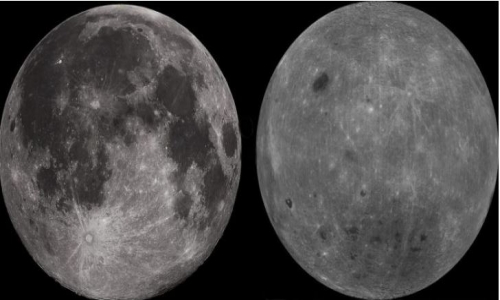


 5:25:41
5:25:41  2024-10-04
2024-10-04  810
810

The world is facing a growing epidemic of shortsightedness, and the future outcomes are blurry.
If the past 30 years are anything to go by, more than 740 million children and adolescents may struggle to see objects at a distance by 2050, according to new estimates.
The concerning projections are based on a global review, which examined the prevalence of myopia, or shortsightedness, using data collected from 50 nations as recently as 2023.
Previous projections only considered data up to 2015, but even then, it was predicted that half the world's population would be shortsighted by 2050.
The newest analysis was led by researchers at Sun Yat-Sen University in China, and it considers 276 studies, covering around 5.4 million children and teens and nearly 2 million cases of myopia.
Public health scientist Jinghong Liang and team found that from 1990 to 2023, the global prevalence of myopia in people aged 5 to 19 increased from 24 percent to 36 percent.
Prevalence was highest in Japan, where 86 percent of children and teens currently experience shortsightedness. The nation with the lowest prevalence was Paraguay at just 0.84 percent.
If eyesight among children and teens continues to worsen at the same rate going forward, the prevalence of myopia in young people worldwide could reach nearly 40 percent by 2050, exceeding 740 million cases.
In Asia, specifically, prevalence could reach nearly 70 percent by 2050.
But what if the rate speeds up? Over the past 30 years, and especially after 2020, data suggests the prevalence of myopia has been increasing – and not just in a few places.
Previous studies have also linked the COVID-19 pandemic with worsening eyesight among children. In 2020, for instance, researchers in Hong Kong detected a rapid rise in shortsightedness among 709 children between the ages of 6 and 8.
While genetics undoubtedly plays a role in myopia, that cannot fully explain the recent surge in myopia cases worldwide.
Even when a child has two nearsighted parents, a study found if they don't spend enough time outdoors, the genetic threat of myopia increases to about 60 percent.
Playing outdoors is thought to reduce the risk of myopia in children, and during the pandemic, kids in many other parts of the world were limited to the indoors. What's more, school during the pandemic often took place virtually, placing students in front of screens for longer than is typical.
"This is particularly significant for pre-school children, as they are in a critical period of visual development characterized by high plasticity," argue the authors of the recent global review.
"There is a need to gather data to measure the variations in myopia prevalence among the youth population over time, as there have been noticeable differences in both ethnicity and geography."
In Africa, for instance, the prevalence of myopia among children and teens is seven times lower than what is seen in Asia.
No one yet knows why that is, but a correlation exists between the duration of education and the occurrence of myopia. In Singapore and Hong Kong, children as young as two or three years old actively engage in educational programs before formal schooling.
"It is plausible that the earlier introduction to formal educational practices at a young age may influence the incidence of myopia during childhood," Liang and colleagues suggest.
"These findings are an important step towards understanding the trends in myopia over time, particularly in populations experiencing rapid transitions in myopia and the significant surge during the special period of the COVID-19 pandemic."
The authors argue it is imperative that we identify why myopia is increasing among young people and come up with evidence-based ways to prevent worsening eyesight in the next generation.
Reality Of Islam |
|

The process

Astronomers

Cosmologist

Scientists
 9:3:43
9:3:43
 2018-11-05
2018-11-05
10 benefits of Marriage in Islam
 7:5:22
7:5:22
 2019-04-08
2019-04-08
benefits of reciting surat yunus, hud &
 9:45:7
9:45:7
 2018-12-24
2018-12-24
advantages & disadvantages of divorce
 11:35:12
11:35:12
 2018-06-10
2018-06-10
 6:0:51
6:0:51
 2018-10-16
2018-10-16
bahlool & the throne of haroun rashid
 8:20:35
8:20:35
 2018-06-21
2018-06-21
 3:18:29
3:18:29
 2022-12-24
2022-12-24
allah will not answer all your prayers
 6:56:28
6:56:28
 2022-01-01
2022-01-01
 10:35:40
10:35:40
 2022-05-26
2022-05-26
 2:42:26
2:42:26
 2023-02-02
2023-02-02
 9:50:37
9:50:37
 2023-02-28
2023-02-28
 3:43:50
3:43:50
 2022-11-05
2022-11-05
 5:41:46
5:41:46
 2023-03-18
2023-03-18
| LATEST |